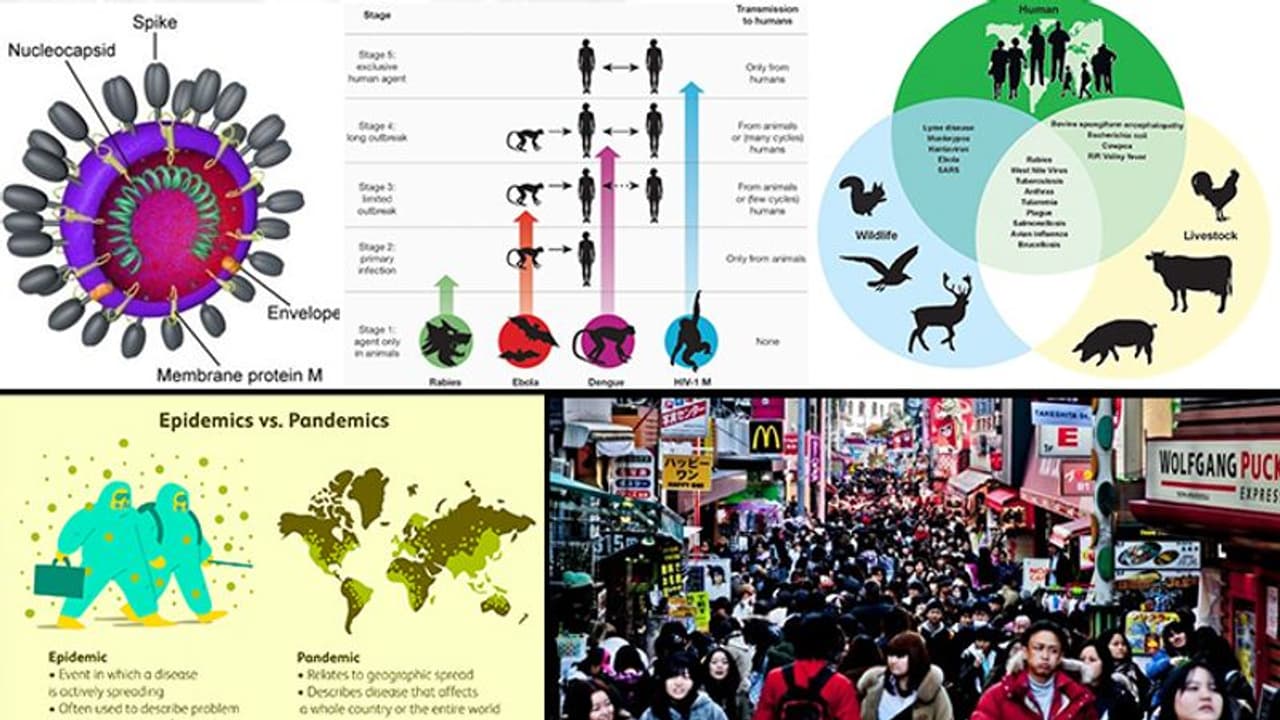While we come to terms with how to stop the spread of coronavirus, we also should start understanding the causes of epidemics which could lead to pandemics and how to avoid another crisis like this
While we come to terms with the existing pandemic of coronavirus and are busy combating it, let’s not forget it is very likely that this situation could occur again. We must understand the probable causes of epidemics and pandemics and what one needs to do to avoid this sort of situation from recurring.
What is epidemic?
An epidemic disease is one “affecting many persons at the same time, and spreading from person to person in a locality where the disease is not permanently prevalent”, i.e. it affects at a local level ranging from town, city or state. The World Health Organization (WHO) further specifies epidemic as occurring at the level of a region or community.
What is pandemic?
Compared to an epidemic disease, a pandemic disease is an epidemic that has spread over a large area, that is, it’s “prevalent throughout an entire country, continent, or the whole world.”

What are viruses?
A virus is made up of a core of genetic material, either DNA or RNA, surrounded by a protective coat called a capsid which is made up of protein. Viruses are the simplest of all living organisms that are present on the earth since the origin of the life, the reason for their existence on earth for such a long period of time is their relatively simple structure, which makes it easier for them to withstand wild range of temperature, humidity, UV radiations and many other physiochemical conditions in the environment.

Zoonotic infections:
Zoonotic infections are diseases that are transmitted between different species from animal to humans and humans to animals.
20th and 21st century has seen a steep rise in the epidemic and pandemic infections, most these diseases are caused by viruses and bacteria, as these are relatively simple organisms that can sustain in different environmental conditions. The major reasons behind the increase in the number of epidemic infections over past century are population explosion and increased interactions at the human animal interface.

- In past decades large number of people all over the world started domesticating many wild animals, e.g. pythons, crocodiles, lemurs, bats, etc.
- As a result of which many wild animals are directly led for domestication away from their natural habitats, which has led to increased chances of many pathogenic organisms that have resided with these animals into the human population.
| Death toll | Location | Date | Event | Disease |
| 1,000,000,000 | worldwide | 1918-1920 | Spanish flu (pandemic) | |
| 2,000,000 | Worldwide |
| ||
| 779 | Worldwide | 2002–2004 | ||
| 151,700 – 575,400 | Worldwide | 2009 | 2009 flu pandemic (informally called "swine flu") | Swine flu |
| 862 (as of 13 January 2020) | Worldwide | 2012–present | ||
| >> 11,300 | Worldwide | 2013–2016 | ||
| ~53 | Worldwide | 2015–2016 | ||
| 13,500+ | Worldwide | 2019–present |
- Apart from this use of wild animals in traditional medicines as seen in eastern and south eastern Asia, this has increased the demand of these animals for medicinal purposes.
- Also, all over the world different wild animals are being consumed as food delicacies that may be raw, boiled or partially cooked for flavor and taste.
- All these irregular trends that have increased over the past years is due to population explosion, due to which there has been an increased demand for food and medicine resources from all niche of the environment and today also a major population of the world relies on animal livestock for food.
- Crowded urban areas around the world and rapid transport facilities over the continents carrying bulk quantities of passengers plays a chain reaction role in transmission of disease over different countries in a small amount of time.
- It took 300,000 years from the origin of human race to reach a population of 1 billion and in last 100 years, a billion people have been added to earth.

A continuous social contact of people for longer durations in densely populated areas helps in rapid transmission of the diseases.
- The time before the symptoms of a viral infection appear is called the incubation period.
- The contagious period is the amount of time during which a sick individual can give the disease to others.
- Many pathogenic microorganisms have evolved to transmit between different species like from animal to humans.
- There are 1,670,000 types of viruses on earth of which 631,000-827,000 can infect humans.
Preventions:
- There is an emerging need to cut down the interactions at the human animal interface and also maintain social distance in individual’s life.
- One should limit unnecessary weekend parties with office colleagues and other social gathering that are just for fun (it doesn’t mean an absolute isolation of individual’s self, but people should limit themselves from social events that include wastage of resources and unnecessary crowding).
- Larger urban populations should be shifted to suburban and countryside localities so as to avoid overcrowding of people in single small area.
- All the developed as well as the developing nations need to employ strategic management of their population distribution over the country as well as go for family planning and need to shift towards more of a vegetarian diet.
- The complete global population needs to follow all these essential steps, failing which, there will be another epidemic disease within 4-5years that may be even more dangerous with greater morbidity and mortality rate.
(Sagar Narkar is a postgraduate in Biochemistry and an environment enthusiast who is highly interested in structural virology)
